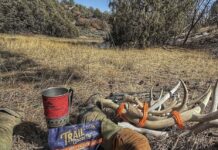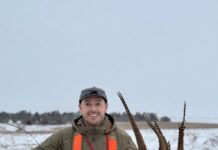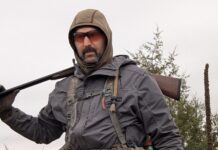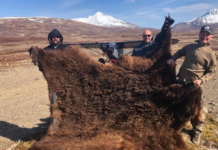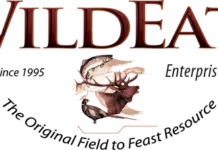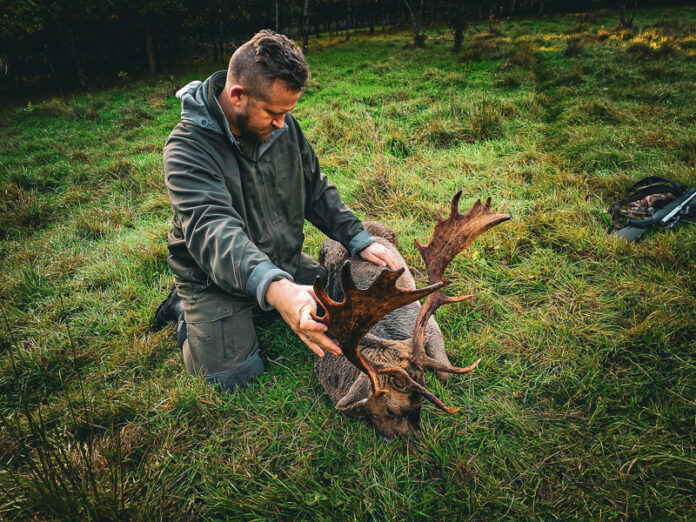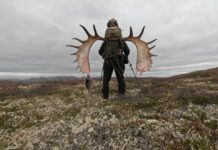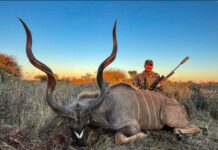Few experiences in life transport us into the feeling of being somewhere else entirely. Yet, as I heard the guttural moan of a fallow deer through a fog-engulfed stand of young oaks, I wondered if I had found Narnia. Nothing about this place was familiar and nothing anchored me into the reality of what was being revealed. The smell of wet earth after a rain was different here and while it reminded me of the petrichor of home, it was still distinct. I knew my quarry only from pictures studied and it seemed more at home in a fairy tale than it did in southern England. The deer’s form was a shadow in the mist as it came closer until I could make out its sweeping antlers and striding legs.
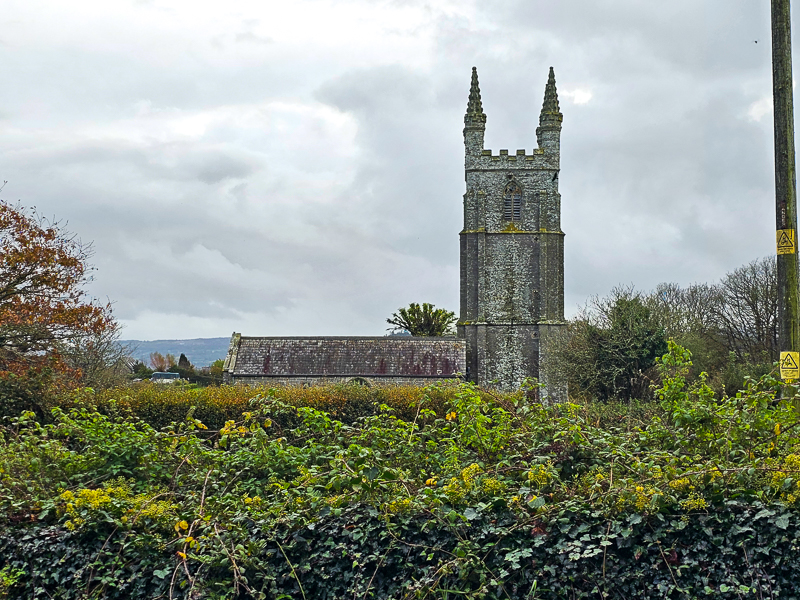
The Land Of Robin Hood
This is the land of Robin Hood that most Americans conjure in their minds of England. Thick oak forests with canopies darkening the ground underneath and stone castles perched on hilltops in the midst of green pastures are true images of the rural lands of England. It was exactly what I had pictured when the opportunity for me to hunt the countryside of Great Britain was extended. I knew next to nothing about hunting across the pond but set about my preparation immediately. Along the way, I became enchanted by my ancestral home and fell for its seducing charms.
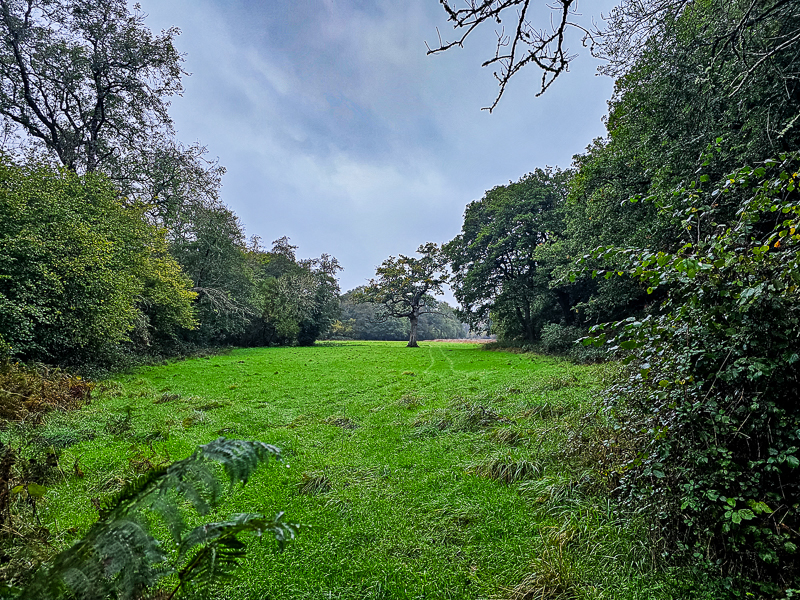
Six Deer Species
The United Kingdom is home to six species of deer: roe, red, fallow, sika, muntjac, and Chinese water deer. Of these, only the first two are native. The fallow deer had first been introduced over a millennium ago but had died out twice. The latest introduction has taken hold, and there is no concern that they will need a fourth go. In the 1860s, sika were introduced to mainland England. Muntjac were deliberately released in the early 1900s and have spread north to Scotland. Chinese water deer escaped from a zoo in 1929 and now comprise over 10% of the world’s population. All have had significant impacts on the surrounding countryside. During the Covid pandemic, deer populations were left largely unchecked due to prohibitions on international visitors and requirements to remain inside. Surveys put their numbers at all-time highs and nearly twice what would be considered sustainable. This makes for great opportunities today for sportsmen.
Travel Considerations
Compared to the two more popular hunting destinations, Africa and New Zealand, arranging logistics to London is simple and shorter. After flying into the capital, trains can deliver you into the counties and almost to the doorstep of your final destination. Personal rifles can be brought into the country, but the process and permitting, coupled with the availability of an estate rifle, make it a burden better left at home. No hunting license is required, but personal hunting insurance can be purchased for £100. Most estates will require it. Any hunter from over here will have the requisite gear to stalk deer in England. The list is simple: Wellies, what we call Muck boots, and a Macintosh raincoat. I added a wool flat cap to my kit and since it was nearing Armistice Day, a red poppy. All hunting is on estates with a gamekeeper who carries any necessary equipment such as thermal camera or kit for field dressing.
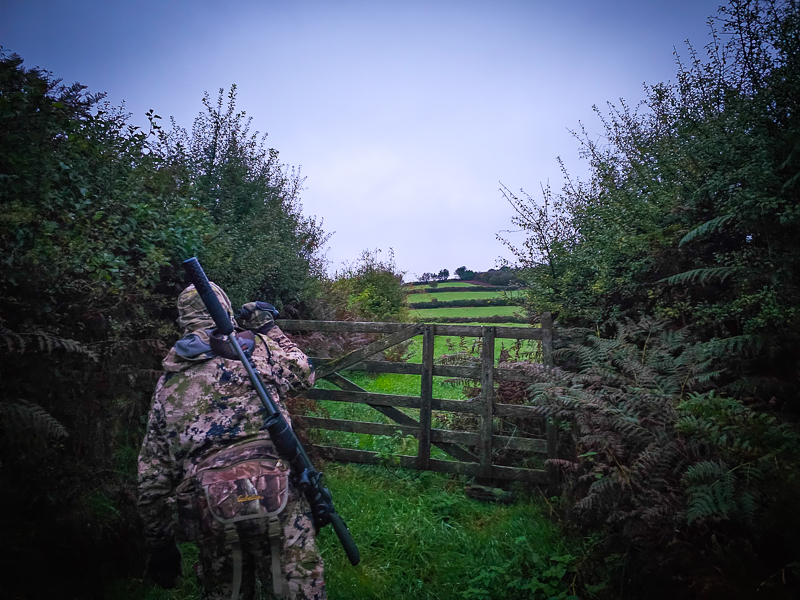
Strict Requirements
As it is here, the shot taken is the responsibility of the stalker. Identification of species and sex can be difficult for the newcomer to Brittania. Etiquette and regulations require strict adherence. The British Deer Society is an incredible source for all of this. The Deer Stalking Certificate will surprise any American who has completed a hunter education course with its breadth of topics and requirements for successful completion. Since most stalkers function as biologists and wardens in some ways, more is required to go afield. A clear difference between how the two countries manage wild game is the ability of British stalkers to market their venison. To be eligible, they must complete another certificate in food handling and bring the carcass to an approved game-handling establishment. It is then inspected and registered before it is processed for public sale. This places a great responsibility on those who shoot deer in the United Kingdom but also provides a great benefit to local meat markets. Wild game is growing in popularity with non-shooters.
All Private Land
There is no public land for hunting throughout the British Isles. Any thoughts of a DIY pursuit should be quickly doused. Some connection to the estate either through syndicates (hunting clubs), outfitters, or gamekeepers will need to be the starting point. Seasons are set by the national government, but populations are managed locally by the keepers. Their conservation ethic recognizes a balance of the landscape and the deer inhabitants. Harvest goals are set based on their observations and the needs of the estate.
Interacting With History
Hunting the United Kingdom also means interacting with 2,000 years of history. While pursuing sika through the gorse, I was in the shadow of a castle built by William the Conqueror during the eleventh century. I watched roe deer frolic in a field as the bells from a church rang, just as they had for five centuries. The ground I walked as I heard the red stags roar was the same a thousand Viking warriors had crossed with the sons of Ragnar. It would be impossible not to stumble across some relic of history during any hunt. Just as the dangerous game defines African hunting and the wild landscapes mark Alaska, England is enshrouded in legacies and narratives.
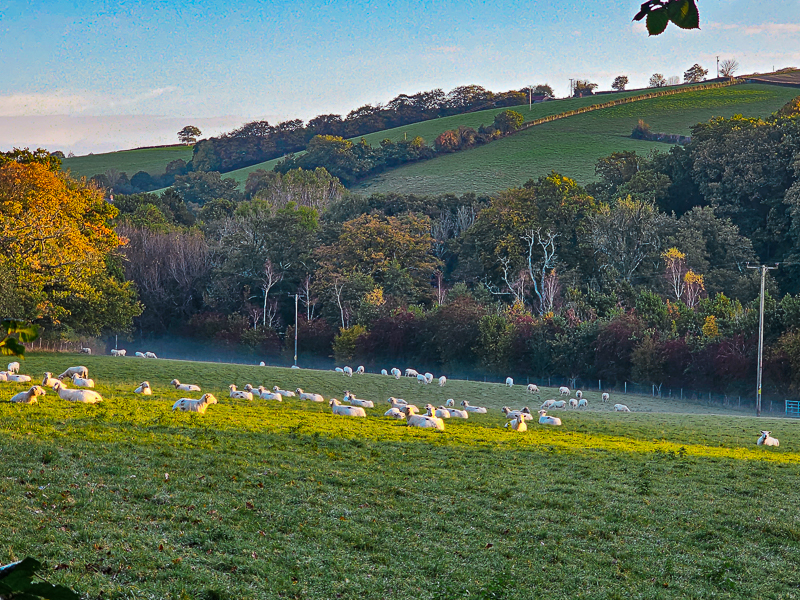
True Sportsman
Those who shepherd those places are great sportsmen themselves. Each county of England offers something unique, as do those who stalk their lands, and the international hunting community is well served to include those from Devon and Dorset. They approach their craft not as a hobby but as a calling that requires reverence and consideration. Their skill in the woods isn’t a trifle that was picked up but honed and refined with deliverance. Without knowing it, they embrace the hunter’s paradox through their cheerful engagement in shooting deer. And yet, they also envy a Yank, with our open lands and abundant wildlife. While enjoying their own abundance, they lend an eye to what lies west.
Back To The Hunt
The second morning of my hunt, we found ourselves in the same draw as the day before. The rut had begun to recede, but it brought an increased urgency to the bucks sounded by their calls. Their groans, or belches, are similar to the white tailed deer but longer and more plaintive. A quick scan with thermals showed the activeness of a couple of deer in the field, but little more. There was no wind yet, something that could change as the morning warmed the bottoms of this shallow valley.
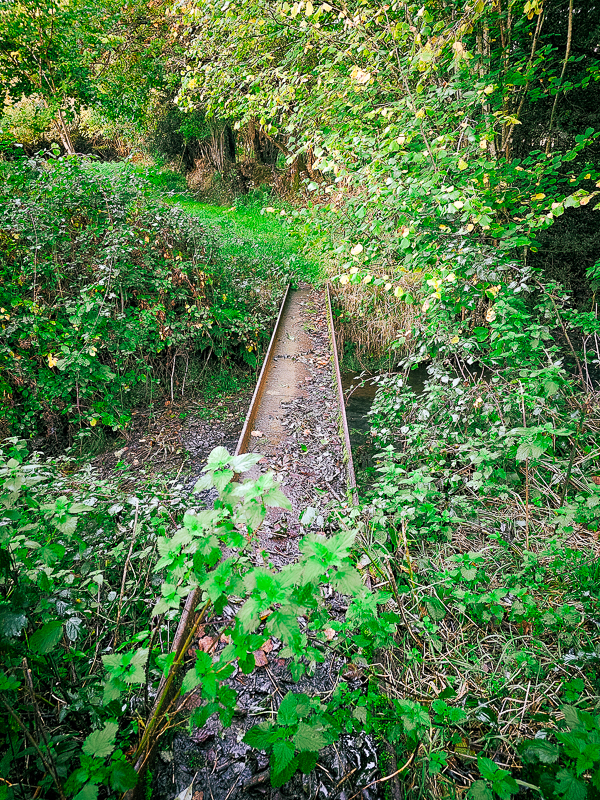
Stalking Through History
My compatriot Richard knew this small farm well, and based on the previous stalk, he advised us to make a large loop around this particular area. Moving swiftly back to the moss-covered gate, we motored around the stone and holly hedge. I was told you could age the hedgerows by adding a century for each species that grew in the matrix and this one was only a couple of centuries old. We parked the truck in an old grain mill that had long been in disuse. The morning sun was fully up, but it had yet to burn off the fog.
We made our way into the first pasture and met the faces of two score of sheep. Not wanting to disturb them and that disturbance ripple into any deer, we hugged the wall and headed opposite of our intended direction. Two fortunes were found in this approach: The sheep remained curious but docile and made no sound that might alert the deer. The other is one I speculated on after the stalk. Before entering the sheep meadow, a few does were seen feeding below them on the thermal camera. Now that we had infiltrated the area and crossed through the gate that separated us from the sheep, they were gone. While we didn’t know it at the moment, we had put ourselves between the does and a buck looking for one final tryst.
Continuing Through The Oaks
On the other side of the fence was a young oak forest that caused us to crouch and peer through it. The ground was soft and trails formed a lattice through the place. We paused after a few hundred yards, hoping a belch would give us our direction. It was a stillness devoid of birds or other creatures and even our footsteps were silent on the soft land. With no signal, we pressed deeper into the forest. A small creek ran briskly and had cut a deep channel requiring an old iron I-beam for a bridge. It seemed out of place in this ancient wood, and I wondered how it had even been placed there. Still slick with morning dew, we crossed it carefully.
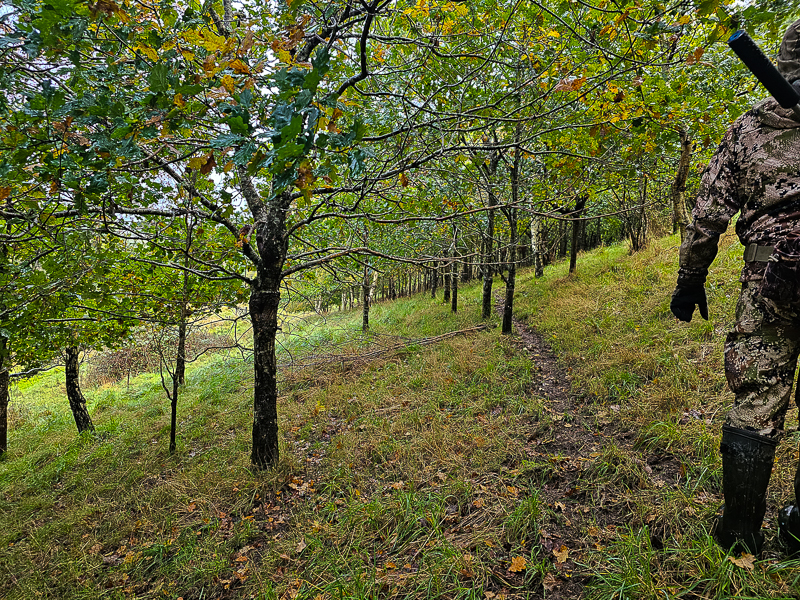
Rutting Fallow Deer
It was then from behind and below us a buck announced his presence. Several croaks made the direction plain and we scurried back across the makeshift bridge with more expediency than caution.
I had no measure to determine its distance, but my friend was sure he was close. Close behind I followed his long steps and we stopped after several to listen. There it was again: a staccato coughing that was now louder. Richard was assured we needed to go no further and stepped into the open path that disappeared in front of us. He motioned me to set up the shooting sticks I had been carrying and placed his rifle atop. I eased into the rifle and adjusted the height just slightly. Through the reticle, I could see the tree-lined walkway melt into steel-blue cloudiness. Again, the buck belched.
Majestic and Regal
Then, perhaps the most majestic entrance I have ever seen from an animal unfolded. Stepping from the haze, he was framed between an oak and a shrub. He stood dominant. Facing straight on, he turned his head as he surveyed his kingdom. I centered the reticle and immediately wondered if I would become enraptured with this scene and not know when to squeeze the tripper. “Shoot him,” Richard forcefully whispered. My mind shifted from spectator to shooter in an instant and the buck was down.
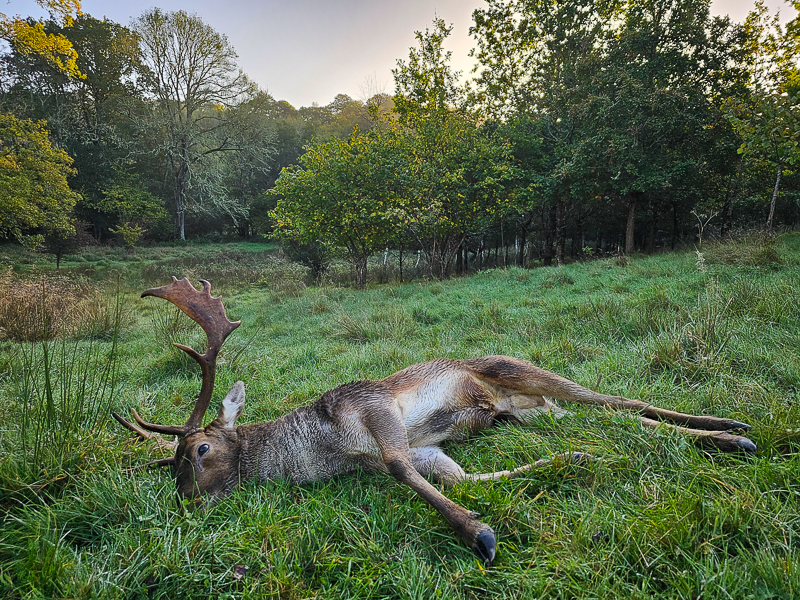
I approached the buck with the same reverence I do every life I take but also with a new sense of awe. I was awash with a sense of newness as I placed my hand on him to feel the coarseness of his hair and the texture of his antler. A foreigner here no longer, I had now given of myself to this place and was rewarded with one of its own. We had completed the stalk well and I found my prize was unrivaled.
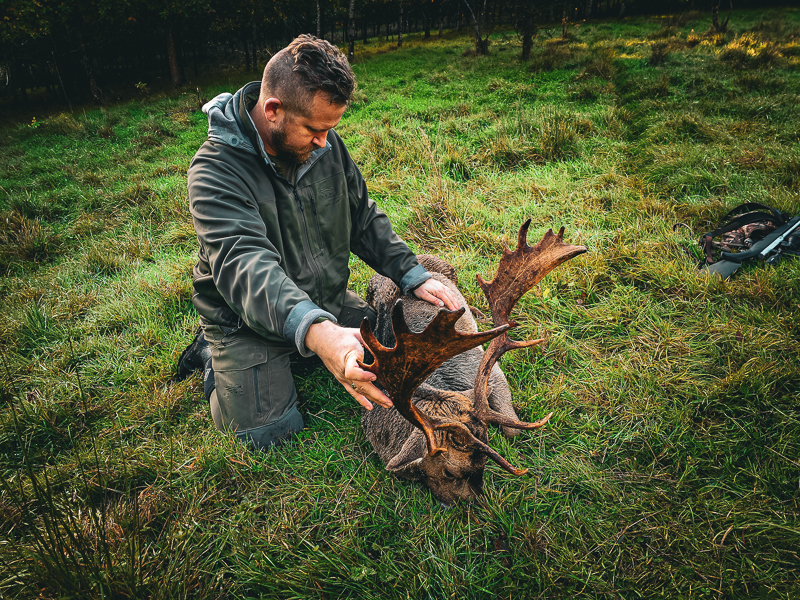
Comment or ask Everett questions about this adventure here.

